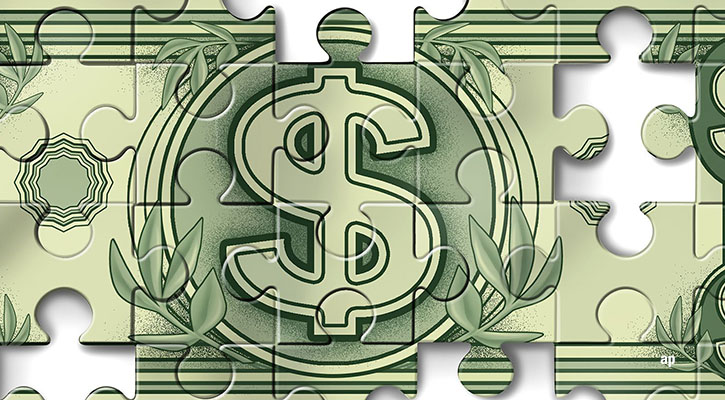Kate Lin: Welcome to Morningstar. The futures market is slowly building consensus that the U.S. will see interest rate cut by at least one percentage point in 2024. Now, as short-term bonds and cash-like vehicles rule, what is the role of income-seeking multi-asset funds? And, how are these managers positioned in response to this macro environment?
We're talking to Vivian Sze, multi-asset solutions investment specialist at JP Morgan Asset Management.
Hi, Vivian. First, what is your base case scenario for interest rates?
The Fed's Pause Is In Line with Market Expectations
Vivian Sze: Sure. So the Fed held rates at 5.25 and 5.50 percentage points as the market is expected at the September meeting. And, our core view is that the Fed is likely done hiking. We’re inclined to think that the macro data we have been getting looks pretty consistent with the Fed pause for the remainder of this year. But at the same time, we do acknowledge that rates could stay higher for longer.
The U.S. economy has been very resilient and while its inflation is moderating, it is still above central bank targets. And we do think it'll take some time to really get it down below 3% in a substantive way. The Fed, we know is going to be quite data-dependent. A lot of the forward guidance suggests that there is still that option to hike again. But in our view, if core inflation continues to moderate, and the labor market continues to see that gradual rebalancing, we have likely reached the peak rate of this cycle.
Obviously, there's still a little bit of uncertainty around how long rates are going to stay at that higher rate. But our base case is that the Fed can start moving towards a more balanced policy and really start thinking about cutting rates next year, say Q2 or Q3, when we do see lower inflation or weakness in growth as a result of restricted policy.
Lin: So given that until the last quarter of 2023, what are the key changes in the portfolio?
Sze: The overall macro backdrop has definitely improved since earlier this year and really lowers the odds of a recession, would call for a more neutral stance on risk assets. So we're not overly bearish here when it comes to equities, but our key premise is that we are still in an environment where growth is expected to slow from here. And given that there are still a lot of downside risks, we still want to introduce some caution into portfolios. Therefore, we're not dramatically leaning into equities at this stage. We think it's important to still stay well balanced to focus on quality and areas where there are really attractive risk-adjusted yield and return.
And on the fixed income side, we have been incrementally adding to duration as yields backed up to really take advantage of attractive valuations. Duration typically offers very compelling returns as we approach the end of the hiking cycle. We also think that you know over the medium term as stock-bond correlations approach negative territory duration is really going to offer some protection and really act as a source of diversification for multi-asset portfolios. With that said, there is still a lot of uncertainty here. So we want to remain nimble and flexible because the macro story that's underpinning portfolio positions could continue to evolve.
Buy U.S. High Yield for Bond Carry
Lin: Alright, let's stay on fixed income for a little bit more. Investors are wary of high-yield bonds as the economy slows. Are you worried?
Sze: In the context of an income strategy within the multi-income fund, we still have a core allocation to U.S. high yield. That's really because given that the core macro scenario is one of soft-landing recession is not very imminent. We do think this is the perfect type of environment for carry. With the U.S. high yield, you're getting all-in yields close to 9% to date, which is really over 3% yield-pick up over IG credit.
Whereas with IG credit, even though you’re taking on more credit risks, you're not getting much of an upside over treasury or money market instruments when it comes to yields. So right now there are a lot of alternatives when it comes to carry.
Now, a lot of the argument made against high yield has been around spreads and we do acknowledge that valuation relative to history could be seen as a headwind. The pure comparison to history is perhaps not the best way to justify the value of high yield because the quality of the universe has improved a lot as well. When we look at corporate balance sheets, that’s still very robust. And, most high-yield issuers don't have to refinance until 2025, which gives us a lot of leeway here. And so at this juncture, we think that the yields and the fundamentals are still justified. This is really what makes high yield quite a compelling opportunity as part of a diversified multi-asset income portfolio.
As Rally Broadens, Dividend Stocks Will Enjoy Tailwinds
Lin: Another vehicle your multi-asset portfolio uses to draw income is dividend stocks which have lagged growth stocks so far this year, what is your take on this?
Sze: We do think that the equity rally we’ve seen year to date has been very concentrated, mostly in mega tech, AI-related names. Outside of AI, the market has risen but not as dramatically.
We think that moving forward, markets should have more balance to it in terms of style because a lot of the AI story has really run its course now. Those stocks have gone up immensely; valuations are quite overstretched for some of these names. And this has created a very compelling valuation opportunity for dividend stocks.
As income investors, it gives us comfort that looking ahead, we'll be investing with a valuation tailwind with dividend stocks. You're also picking up a decent yield of 4 to 5%, which we think is going to be supportive of returns. While we're cautious about earnings, dividends are still supported by relatively low payout ratios. So there is a lot of buffer in terms of the resiliency of the payouts.
Ultimately, you’re really getting exposure to high-quality companies with strong secular support, particularly within the large-cap space, which is going to be very important when markets really start to shift their focus from AI back to the macro and back to the company fundamentals.
Yields on Cash Are Attractive. But, Are They Sustainable?
Lin: So income-focused funds are facing competition from cash and money market funds as the latter has more decent yields So what do you think can multi-asset income funds offer to income-seeking investors?
Sze: Well, we have to remember we are near the peak of the global rate cycle. Cash yields are coming down and what that is signaling to us is that we have to start looking for income that is actually sustainable because there is a reinvestment risk that we really need to consider. At the end of the day, investors shouldn't anchor themselves on deposits because markets can change very quickly, such as this year when most income-generating assets significantly outperform cash. So we should be reminded that while cash does serve a purpose, it also comes with an opportunity cost.
Over time, we want to look for income that is not only sustainable but can also capture that rally and that upside when markets do bounce back, especially considering that the core macro scenario is one of a soft landing. And what a multi-asset income portfolio can offer is really that consistent income balanced with opportunity for capital growth, which ultimately gives investors a better total return experience over the long run.
Lin: Thank you so much for your insight, Vivian. For Morningstar, I'm Kate Lin.












.png)



.jpg)





